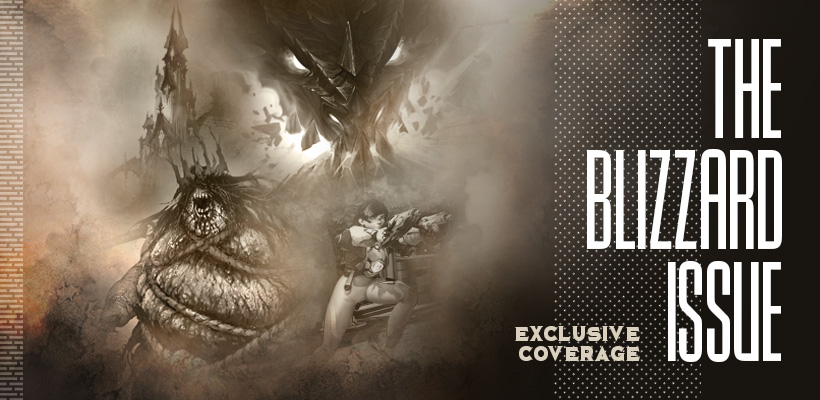Diablo’s narrative isn’t the biggest reason that people continually return to the series, but after more than 23 years, the franchise has built an impressive lore bible. Believe it or not, the Blizzard team spends a lot of time designing the story quests that give players context for cracking thousands of demon skulls. To gain some insight into the process, we sat down with lead game designer Jesse McCree and game director Luis Barriga.
Did it take a while to get up to speed with Diablo’s lore? It’s pretty complicated stuff, right?
McCree: I’ve been playing Diablo games since Diablo 1 came out. I read the manual back then, and I still read it today to look for clues or remind myself of some lore. There are a lot of stories left to tell just based on that one manual, and we’ve since added a lot more games, manuals, books, comics, pen and paper RPGs, and so on. There is a lot to know, and luckily for us, we have a dedicated staff of historians and passionate fans who are also developers to help us tell and add to these stories. Because we have over 20 years of information to pull from, the hardest part is editing. We can tell so many stories in so many ways, and fans have told us they want these, but if we were to do that all at once I think they might lose impact. For Diablo IV, we’re working with a complex and abundant amount of lore, and we want people to feel the vibe and dark tone we’re going for just by playing the game.
Click image thumbnails to view larger version
How do you balance telling an interesting and intricate story without bogging down players who just want to kill monsters?
McCree: We have some philosophy about this, which is “show don’t tell.” Environmental storytelling is very important for this. We like to use our lore and story as a tool to give context to the monsters you’re fighting, and if we do it right, you can glean some information about a monster family just by playing the game. The Drowned monster family, who we added for Diablo IV, is a good example of this. Players will find these monsters near the sea, and when you go out and encounter them, you will notice that their environment reflects their story – they use water attacks, they die in a watery way in some cases, and they use parts of ships for weapons. You don’t need to know their backstory to understand their relationship with the environment, but if you want to know, you can find lore books or pay attention to quests which deal with them specifically.
Did the team ever experiment with different camera placement? I know there was a rumor for a while about the game incorporating more of a traditional third-person perspective, with the camera pulled in tighter to the character.
Barriga: Since the beginning of Diablo IV, we’ve had an isometric or close to isometric camera. We do have moments where we go to other angles in cinematics or to show you something specific, like when we show you the town of Corbach as you emerge from the dungeon in the demo. We also adjust the distance on occasion, like in the case of the World Boss where we pull it back to better frame the enormity that is Ashava and all the players engaged with it.
Click here to watch embedded media
What was happening in that cinematic trailer, anyway? Who are these people, where are they, and what are they trying to do?
McCree: The demon summoned here is Lilith; legend says she helped create humanity, and the Horadrim tell us she is the daughter of Mephisto, one of the Greater Evils. Diablo has always been about adventurers trying to make their fortune or solve a problem, then get into big trouble and find themselves in a particularly bad situation involving lots of death and destruction, giant demons, and world-ending evil. Maybe it’s not such a good idea to cavalierly enter an abandoned dungeon with a disguised demon worshipper and stick your hands in ancient blood magic. Hatred, greed, and terror lead to human sacrifice and demon summoning, which are the roots and a core theme of our world. These events are going to shape the world with some dark and desperate situations.
Can you give us some backstory on the quest with the Drowned queen from the recent BlizzCon demo?
McCree: This type of quest is a great example of the situation where an adventurer thinks they are dealing with one problem and they quickly find out things are worse than they even knew was possible. You find a sick boy in a village, and while trying to find a cure for him, you uncover the fact that his ancestors have put a curse on the family. Now instead of searching for a simple cure, you’re involved in a monster invasion from the sea while the boy and town both suffer. In Diablo IV, you’ll encounter situations like this, and often they will tie into a larger story we’re going to tell about Lilith and her return to this place.
For more on Diablo IV, be sure to check out our online coverage hub, which includes deeper dives into the Sorceress, Barbarian, and Druid classes. As well as rare gameplay footage.
















